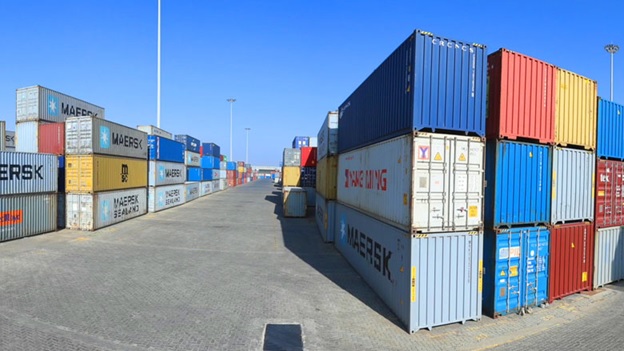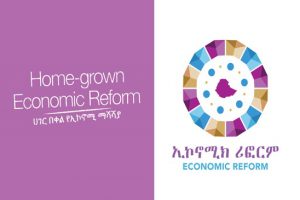
The Ethiopian Shipping and Logistics Service Enterprise (ESLSE) is undertaking a feasibility study to develop two dry ports in Jima and Jigjiga, each costing around one billion Birr.
The study is being conducted in collaboration with the Ethiopian Maritime Affairs Authority (EMAA). Roba Megersa, CEO of ESLSE told the local media that Ethiopia needs its own dry ports and if it has to cut the sky rocketing demurrage, it needs its own dry ports.
It has to cut the skyrocketing demurrage cost and since it has owned more containers it is impossible to properly manage the freight.
As to Megersa, the need for a dry port at Jigjiga arose after Berbera port was commissioned. “We could not use Dire Dawa dry port because it is far away and basically built to serve the Dire Dawa Industrial Park and the railway. Similarly, a new dry port is needed in Jimma because there is no such facility to serve the substantial volume of agricultural commodities and inputs processed in that corridor.” According to a study conducted a few years back, Ethiopia needs 35 dry ports.
Nonetheless, currently, only eight are operational, after Mekelle Dry Port went out of service following the conflict that broke out in the region in November 2020. Dire Dawa, Modjo, Hawassa (underconstruction), Kombolcha, Woreta (became operational recently), Mekelle (currently defunct), and Semera are the operational dry ports developed by the government. However, Modjo handles the lion’s share of shipments targeting the central market.
Currently, the Logistics Transformation Office formed under the Ethiopian Maritime Affairs Authority (EMAA), is finalizing a comprehensive logistics master plan indicating where dry ports, logistics centers, consolidation-deconsolidation areas, warehouse and other facilities should be located. The comprehensive master plan will include road, rail way, water, aviation and facilities that link them and aims to elevate Dire Dawa, Hawassa, and Jimma dry ports in to big dry ports similar to Modjo. The plan also includes various nodes to integrate with neighboring countries Deputy Director of Finances & Deputy of (EMAA) Ewnetu Taye explained.
Apart from embarking on dry port development the ESLSE is also preparing to float a fresh bid to acquire 5 new containers months after it bought 2,000 containers of 40 feet in size and 1,000 containers of 20 feet in size.
According to Roba, the total cost for the 3,000 containers purchased recently was USD 14 million. The price of containers doubled from USD 2,000 after Europe and America also began purchasing in bulk as global logistics activities resumed in post COVID-19.
Containers are manufactured mainly in China, Vietnam, Indonesia, Korea and Malaysia which have been affected by iron ore price escalation. “The demands of containers is skyrocketing in Ethiopia as it has been globally. If ESLSE did not have its own containers, Ethiopia’s import from China totally could have stopped. Since the pandemic global logistic works have been more attractive business and they do not want to stop at the Djibouti port just for the tiny import Ethiopia’s,” Roba said. On another development, the Ethiopian Shipping and Logistics Services Enterprise (ESLSE) plans to transport over 10 million tons of shipment and cargo this fiscal year. Roba Megersa, CEO of ESLSE, said that, the enterprise prepared a detailed plan of activities to be conducted this fiscal year and presented it to various stakeholders for further discussions.
He said that the plan has been under implementation after it was approved by the Public Enterprises Holding and Administration Agency. He also noted that in its effort to contribute its share to the national economy, the enterprise is undertaking different activities to increase the volume of commodities and items to be transported to the country. Accordingly, he explained, the enterprises plans to raise the bulk of transported goods from 8.3 million tons last year to 10 million tons in this fiscal year.
Speaking of this year’s plan, he said while the enterprise use its vessels to transport six million tons of goods, the remaining four million tons will be solely transported by leased vessels from other service providers. According to Roba, about two million tons of fertilizer is expected to be transported this year.
Soil fertilizers account for the largest quantity of shipment. Provided that fertilizers are procured on time, he added, necessary preparations have been made by the enterprise to transport fertilizers and deliver the product to farmers. In addition, the purchase of freight vehicles is already under process. Roba stated that there are plans to procure 240 freight vehicles this year with order already submitted for 38 vehicles. “We notified Djibouti Port to carry out early preparations.
A possible source of concern at the port of Djibouti is the disruption caused by rainfall. Djibouti has recently become a rainy country.
The facilities are not designed for that, and port machineries are often damaged. Hence, requests have been made for the purchase of additional port machinery,” Roba said. Roba further indicated that there will be no hesitation to use other ports.
If necessary, arrangements will be made with Berbera, he added. To improve services rendered by the ESLSE, the enterprise has deployed a fully automated IT system.
Accordingly, Mojo has been fully equipped with an IT system and has CCTV cameras. Two warehouses have also been constructed to unload and store cargo quickly instead of storing it at the port. According to Roba, the Dire Dawa dry port that spans 34 hectares of land is expected to become operational this fiscal year.
The construction of the dry port is essential as Ethiopia is landlocked without its own sea port. Despite the COVID-19 outbreak, locust invasion and the igniting of war in the northern part of the country Ethiopia’s economic growth has continued.
Sectors particularly like agriculture and services are responsible to the registered growth. The enhancement of the volume of the export products necessitates the increasing of the utilization of dry ports and containers.
The increasing of the volume of export products necessitates the finding of additional sea ports as Ethiopia is a landlocked country.
Currently, Ethiopia in addition to port of Djibouti, port Sudan and Mombasa and it is on the way to use Berbera, currently port of Lamu of Kenya is ready to provide service to Ethiopian ships to load and unload their freights. As a developing country to achieve sustainable economic growth, Ethiopia needs to attach itself with the outside world through trade manifested by import and export business. It needs to import inputs for agricultural and manufacturing production.
To enhance agricultural productivity, it needs to import fertilizers, pesticides, combiners and tractors etc.
Therefore to transport the goods in a speedy way it has to use dry ports and containers. Similarly to earn hard currency, it has to export its agricultural and manufacturing products to the outside world. Currently, Ethiopia is in trade deficit and its imports surpasses its exports which means it is submerged in trade deficit. Therefore, to bridge the gap between import and export it needs to produce more and export more.
The country has abundant and untapped natural resources which can boost its export if they are well harnessed.
Currently, the government pursues import substitution policy to save hard currency which would be allocated for importation of goods. This again tells us the increasing of export products which boost its foreign currency reserve.
BY ABEBE WOLDEGIORGIS
The Ethiopian Herald 20 February 2022




